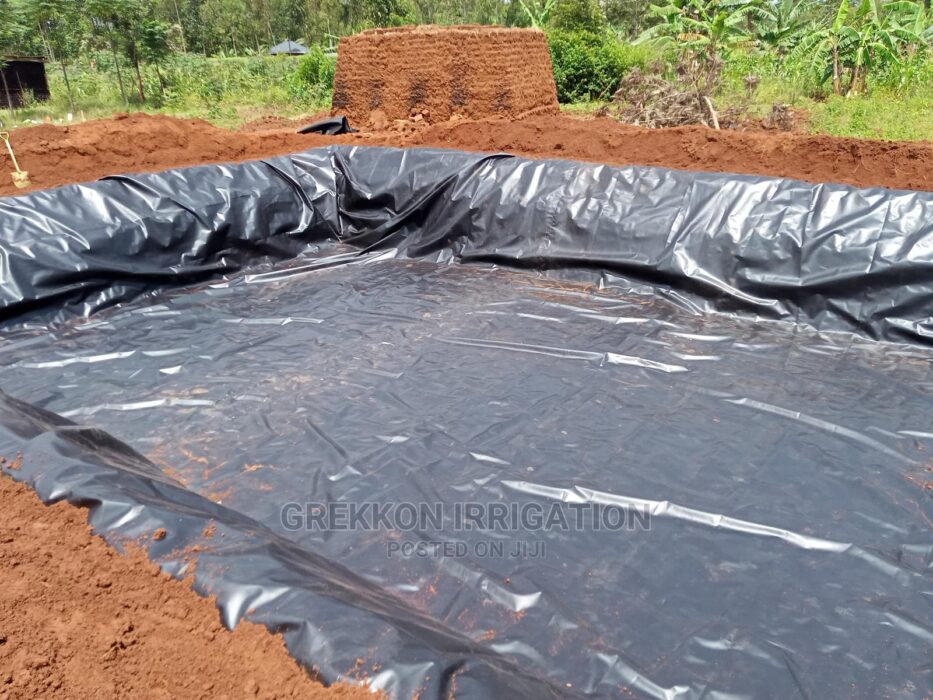
Pond Liner Calculator
In this pond liner calculator article, we answer the following frequently asked questions
1. How is a dam liner calculated?
The formulae adopted depends the shape of the water pan. The water reservoir’s dam liner is calculated differently for a circular or oval water pan vis a vis that of a square/ rectangular one. Similarly, a square water tank has a different formulae from a circular one. A water pan with slanting edges has a different formulae from that with straight edges. Whether the water reservoir or tank is for irrigation, domestic or industrial application, the formulae is the same
I. Square/ rectangular water reservoir or tank pond liner calculator
a. Square/ rectangular pond liner calculator for straight edges: Total length in meters: (length + 2depth + 2meters). Total width in meters: (width + 2depth +2meters). The additional 2meters on each side are for the overlap which is tucked in a trench for water reservoirs. For tanks, it’ll be 0.5M. Multiplying the total length with the total width gives the pond liner area in meters
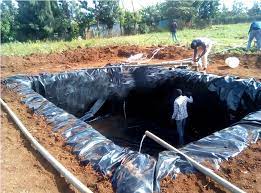
Pond liner installation in a water reservoir with straight edges
Tucking is in a trench all around the water pan
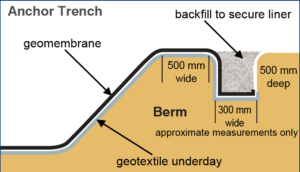
How to trench and tuck your pond liner
b. Square/ rectangular pond liner calculator for slanted edges: Total length in meters: (base length + 2slanting depth + 2meters). Total width in meters: (base width + 2slanting depth +2meters). Multiplying the total length with the total width gives the pond liner area in meters
Pond Liner Calculator: Table
| Circular Liner | Sloped Sides Liner | Straight Side Liner |
| (Circumference*H+0.6M) + (3.14*3.14*r+0.6M) | (SL*2+D+2M)*(SW*2+D+2M) | (L+2D+2M) * (W+2D+2M) |
If your totals include a decimal say 120.3sq, round it up to the nearest whole number, in this case 121M sq. The +0.6M in the ‘circular liner’ and is the overlap. So is the 2M in the straight side liner’
“D” is the maximum depth which is the center-most point of the reservoir
II. Circular pond liner calculator
Diameter + (2height/ depth) + (1meter). The 1meter is the external allowance that goes outside the tank as shown in the image below

A liner in a cylindrical tank
2. How do I calculate how much pond liner I need?
The size of the pond liner is according to the water pan or water tank area. The size of the water pan or tank is by volume, shown as; length by width by depth/ height. The liner size is by area, shown as; length by width. For this conversion, the formulas shown above work
The larger the water pan or tank, the larger the pond liner required

Dam Liner Company In Kenya
Grekkon Limited is the foremost dam liner company in Kenya. From material selection, to welding and installation, our professional teams train growers on all these aspects. It ensures that they make the right choice and why
This is according to the size and nature of their irrigation water reservoirs and tanks. These dam liners in Kenya are UV treated, HDPE geomembrane material in varying thicknesses and weights as tabulated below
| Liner Thickness | Liner Weight/ M SQ |
| 0.5mm | 460g |
| 0.75mm | 880g |
| 1mm | 910g |
The UV treatment reduces radiation damage which is high in tropical countries
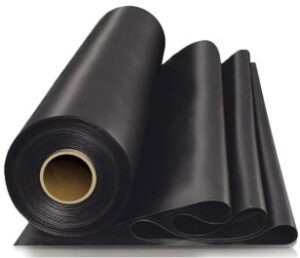
A roll of 0.75mm dam liner
Dam Liner Prices In Kenya
Our dam liner cost in Kenya is broken down into; material, welding, and installation. Once a grower procures a dam liner, s/he will have it welded if the width exceeds 8M. If the farmer chooses for us to install, then the cost of installation applies.
| Liner Thickness | Material Cost (KES) | Welding Cost (KES) | Installation Cost (KES) | AMOUNT (KES) |
| 0.5mm | 220 | 25 | 25 | 270 |
| 0.75mm | 300 | 25 | 25 | 350 |
| 1mm | 380 | 25 | 25 | 430 |
How Are Dam Liners Calculated?
Before determining the dam liner size, one must understand the size of the reservoir or tank. This is by measuring the length, width, and depth/ height (for rectangular or square shaped reservoirs/ tanks). For circular or cylindrical tanks/ reservoirs, measure the diameter, and the depth/ height. The reason this is key is because our dam liner material comes in rolls. To make out the shape of the water pan or tank, the dam liner is cut in large bits from the roll and joined together. This is to create the 2 dimension size of the water reservoir or tank. For example; if the width of the dam liner on the roll is 8M, and the water pan requires a width of 15M. Then 2 pieces, one measuring 8M and another 7M in width from the roll are cut and joined to create the 15M width
How Do I Calculate How Much Dam Liner I Need?
The dam liner calculator is adapted to the shape of the irrigation water reservoir as illustated in the 3 different shapes below
- Sloped sides reservoir

The slope of the dam wall is shown as slanting length (SL) or slanting width (SW) in the dam liner calculator tabulation shown later in this page
2. Cylindrical circular tanks
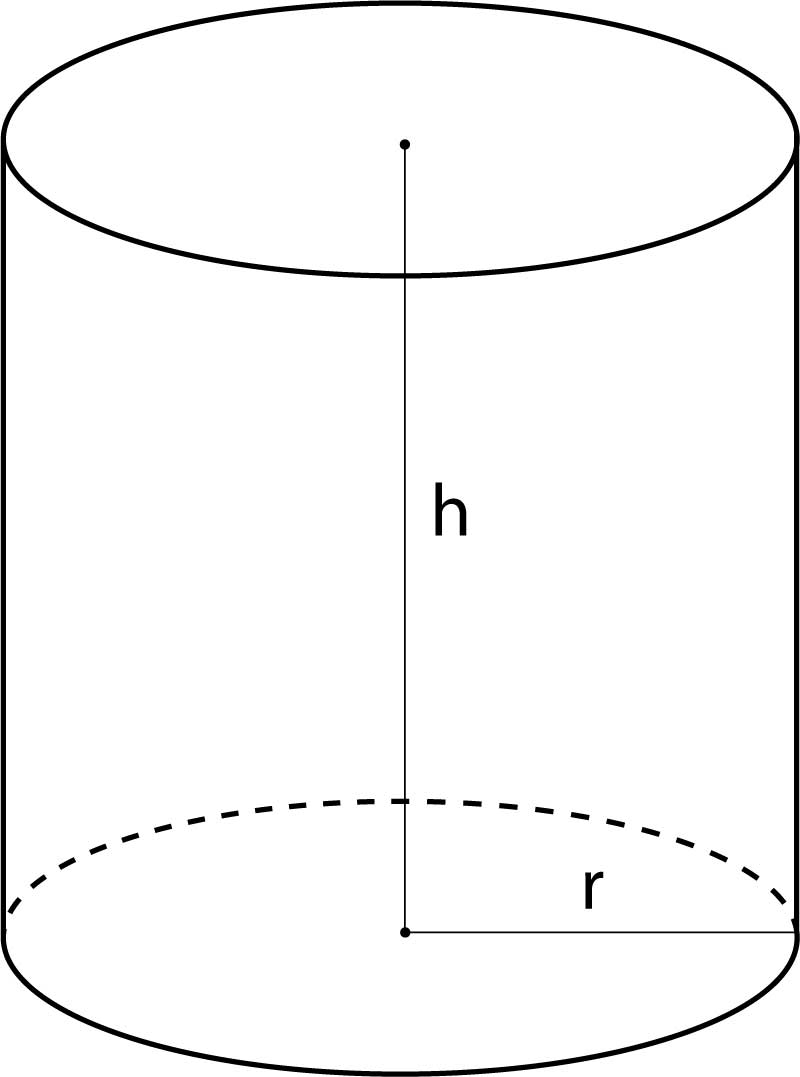
3. Straight side reservoirs
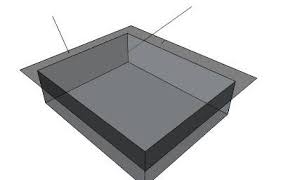
Pond Liner Calculator: Table
| Circular Liner | Sloped Sides Liner | Straight Side Liner |
| (Circumference*H+0.6M) + (3.14*3.14*r+0.6M) | (SL*2+D+2M)*(SW*2+D+2M) | (L+2D+2M) * (W+2D+2M) |
If your totals include a decimal say 120.3sq, round it up to the nearest whole number, in this case 121M sq. The +0.6M in the ‘circular liner’ and is the overlap. So is the 2M in the straight side liner’
“D” is the maximum depth which is the center-most point of the reservoir
Dam Liner Calculator
How much overhang should a pond liner have?
An overhang is the extra liner material that holds the main liner in the reservoir or tank. This excess material is held against the external wall of the tank, or tucked in a trench all around the reservoir to support the dam liner in place. It is covered with soil or stones in the trench. Another alternative to trenching is to lay sand bags on it. The weight of the sand bags holds the dam liner in place
After excavation, it is necessary to compress the mould of soil roundabout the water pan before making a trench
See below
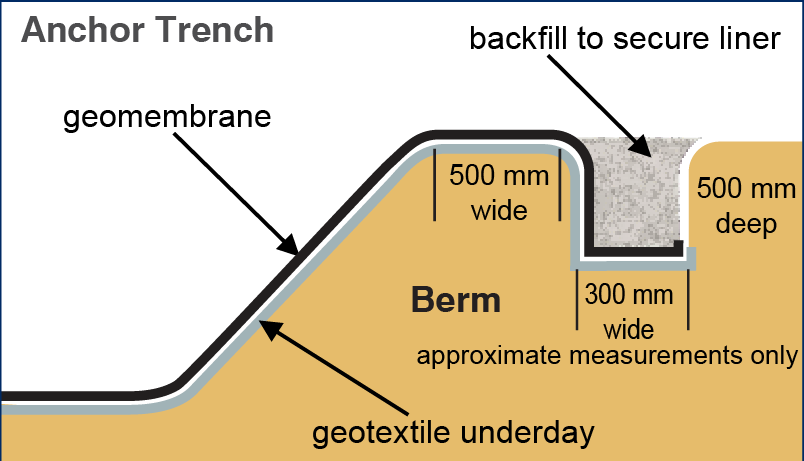
Dam Liner Installation
Our dam liner rolls are 8M wide. So for any width beyond this, the additional size has to be welded on. Welding is carried out fully in the ware house for small liners, and partly in the field for large liners. This is to reduce bulkiness during transportation to site
When installing a dam liner in a reservoir, trench round about the reservoir. This anchor trench is where the liner will be tucked for support
The video below shows a farmer in Nandi county recounting the benefits he has received 2 years later after having his dam liner installed by Grekkon Limited
How To Weld Dam Liners
- Factory welding. Depending on the dam liner size, weld it whole or partially in the factory. The weight and volume of the welded material must be easily portable on site. The latter factor guides on how much of the dam liner material will be put together in the factory
- Site or field welding. This is done on site at the point of dam liner installation. It is the joining together of the partially welded dam liner pieces from the factory. Site welding is done when the entire dam liner could not be wholly put together in the factory. This is as a result of weight or bulkiness, which limits lifting and transportation of the bulky and heavy material. The weight size of the portable material depends on the thickness of the dam liner. The thicker it is, the less it is
- A wedge welding machine or a heat gun/ heat blower is the equipment that does dam liner welding. A wedge machine is what does it in the factory. The heat gun is highly portable, and so is best for field joinery
Dam liner welding involves melting the liner material under high temperature at the point of joining them. Once melted, the 2 layers are laid one over the other and as they harden, become one unit
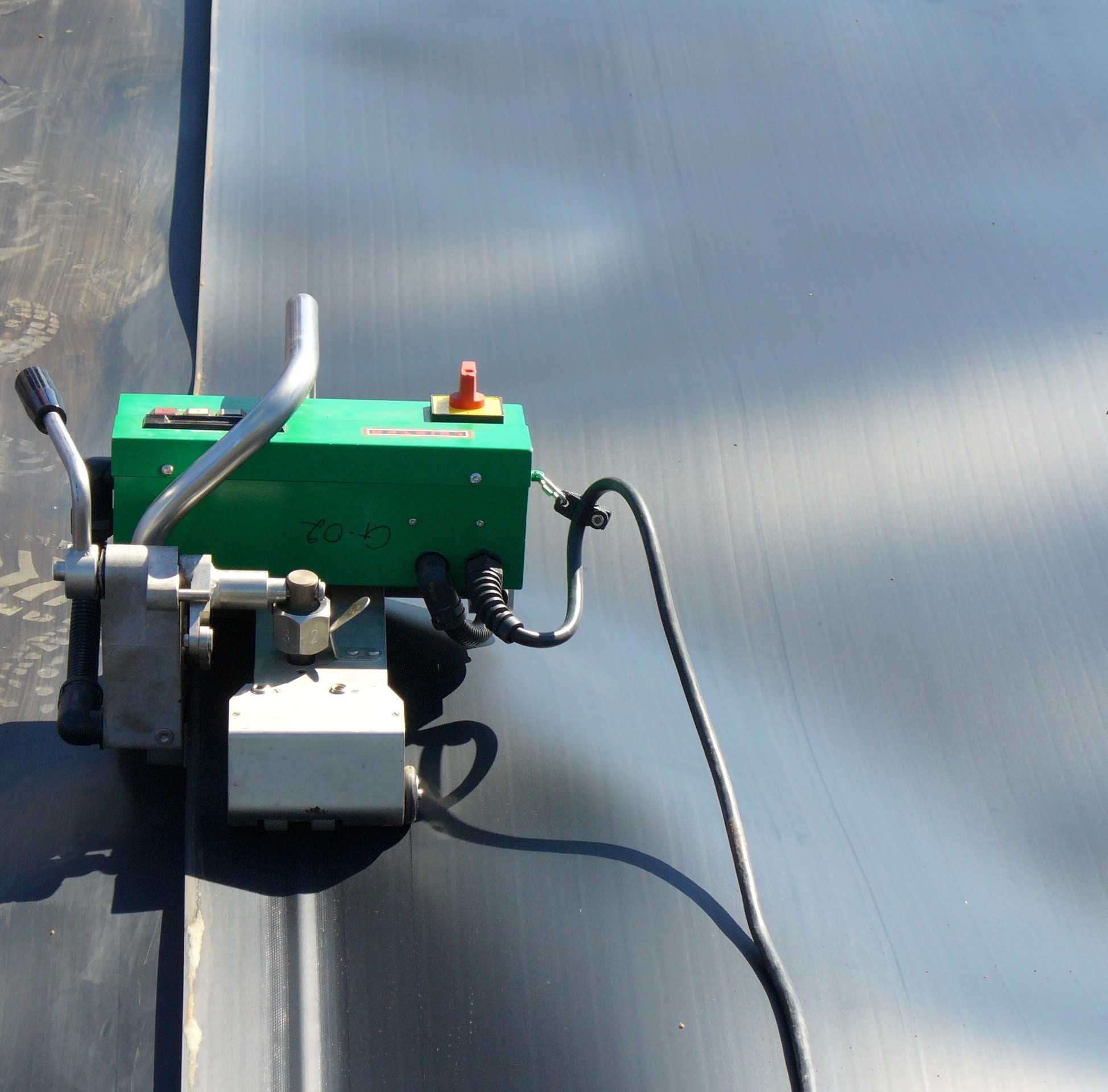
Factory wedge welding of a 1mm thick dam liner
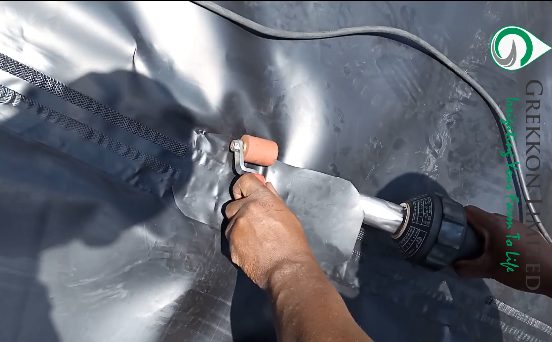
Joining 2 dam liner pieces with a heat gun
Both equipment run on electric power. In off grid electricity locations, Grekkon Limited provides a generator to power the heat gun or wedge welding machine
Dam Liner Company In Kenya: Summary
Every dam liner size is available from our outlets countrywide. Besides supplying and installing liners, our technical team advises growers on;
- The right size of reservoir for a particular acreage
- How to properly excavate your reservoir
- How to select the right dam liner according to ; the reservoir size, surface texture, and one’s budget
Where to buy dam liners in Kenya
Where to buy dam liners in Kenya is from Grekkon Limited. The company offers the best UV-treated black high density polyethylene (HDPE) dam liners manufactured for tropical climates. Our pond liners for sale in Kenya line the walls and floors of water harvesting reservoirs. This is to prevent water loss through seepage into the soil. Changing rainfall patterns and unpredictable seasons are increasingly becoming a norm in Africa. This is why the need for agricultural water conservation is growing amongst farmers. Every farmer practicing irrigation has a water source
Where to buy dam liners in Kenya
| Thickness | Weight per meter square in Kgs | Price per meter square in KES |
| 0.5mm | 0.46kg | KES 220 |
| 0.75mm | 0.88kg | KES 320 |
| 1mm | 0.91kg | KES 420 |
Water pans lined with dam liners are a source of irrigation water storage. This water is from a larger source such as a lake, river, or borehole water, and also harvesting rain and run-off water. Besides irrigation of your crop, the pond liners on your water pan allows for commercial or subsistence fish rearing; the former to boost household income, the latter to supplement household protein
Where to buy dam liners in Kenya
Dam liners are available in the companies 6 branches located in; Athi river, Nairobi, Kisumu, Eldoret, Nyeri and Nyahururu. We supply pond liners either as rolls of 110M x 8M, 0r cut and welded into the client’s water pan’s specifications

Dam liner rolls by Grekkon Limited
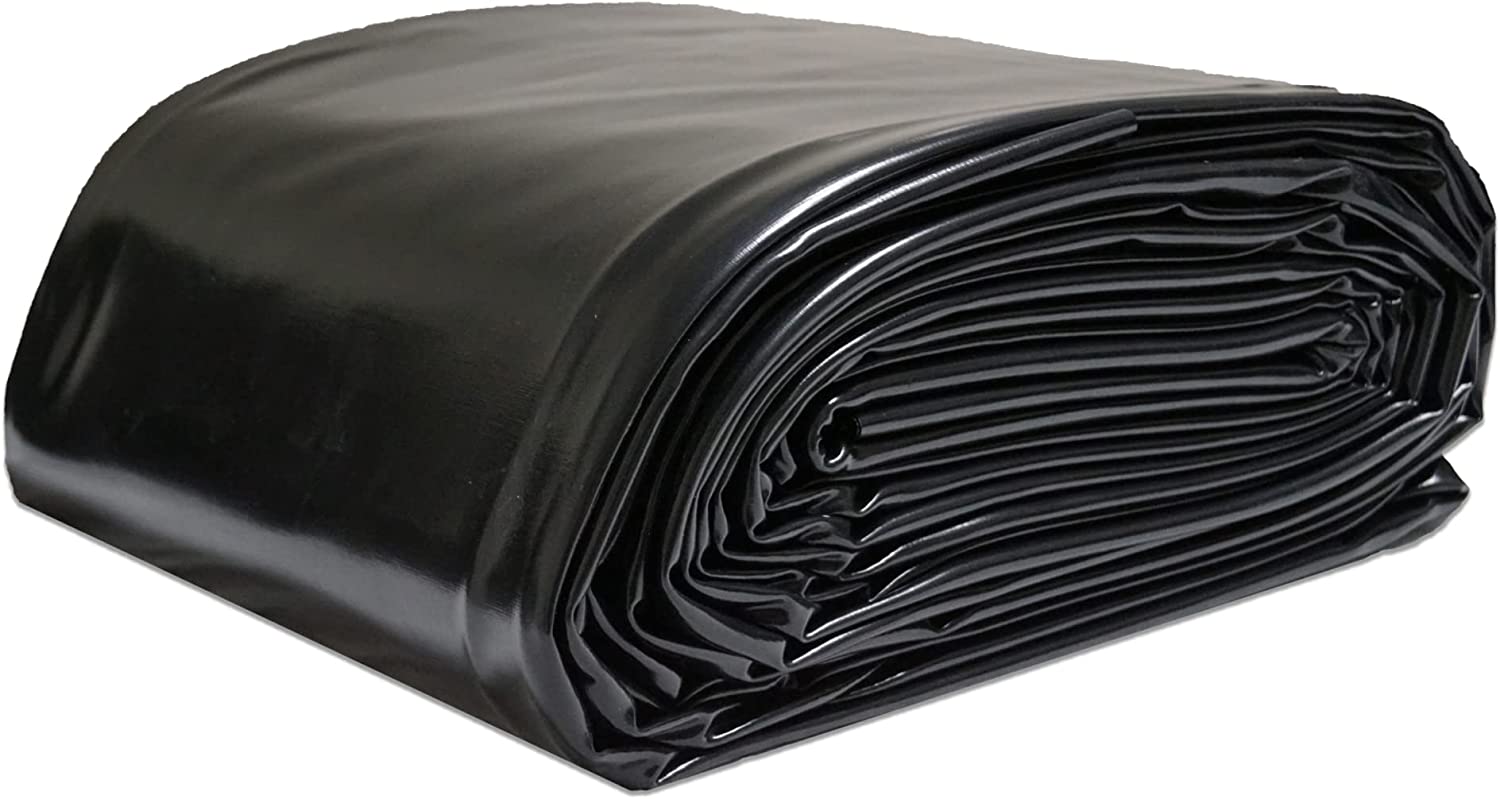
HDPE pond liners cut from a roll and welded to tailor it to the water pan dimensions
Where to buy dam liners in Kenya
Positioning Your Water Reservoir For Irrigation
This depends on:
i. The source of water going into the water pan. If the source is from a lower altitude water source such as a river or lake, the water pan is at an elevated position so that with a water pump, the water is reticulated through irrigation water pipes to the water pan. If the water source is from rain water falling on the roofs or run-off, the water pun is positioned at a lower gradient
ii. Preferred irrigation method. If by sprinkler irrigation or rain hose kits which require high pressure from a water pump, the water pan will be situated at any point. If by low gravity pressure say for drip or button drip irrigation, then it will be at the highest point of the farm

Water harvesting using dam liners
Where to buy dam-liners in Kenya
How to Harvest Water Using Dam Liners
Factors to consider
1. Land size
The amount of water required for half an acre is less than that needed for 20 acres. The latter will harvest more water to irrigate the greater acreage, and the former will have less water harvested. The bigger the volume of water reserved, the larger the dam liner size
2. Location
The amount of rain fall is different in every climatic zone. Growers in the cool wet highlands have just a few dry months in the year, while farmers in the dry zones have more dry months than wet. In regions where the interval between rains is long, larger reservoirs are built for the same acreage as that in the cool wet location. Again, dry locations have very high water loss through evaporation. In this case, it is advised to set up a shade net over the water reservoir to manage this water loss
3. Ground Elevation
The farm gradient determines the location of the water pan. Some choose to have it at the lowest part so as to capture run-off water. If it is for crop irrigation, this water is either pumped uphill to a tank from where it flows back by gravity to the crop. Or it is pumped directly to the crop from the water reservoir. Others choose to locate the water pan on the highest point of the farm so that the water, through gravity flows out to the crop. In this case, the farmer does not retain run-off rain water from the farm. On a flat terrain, irrigation water is physically pumped out to either a high storage tank for onward gravity flow to the crop. Or directly to the crop

A low reservoir that collects run-off rain water
4. Farming System
The size of the water pan will differ for irrigation, compared with aquaculture or livestock production
5. Crop Type
Some crops are more water demanding such as leafy vegetables, than others such as herbs. Then some crops like onion are densely spaced while others are like avocado are sparsely populated in the farm. This will determine the water requirement
6. Irrigation System
Every irrigation system has it’s own unique water use. Drip irrigation conserves water while overhead irrigation through sprinklers or rain hose kits spends huge water volumes
7. Surface Texture
The surface texture of the water pan determines the dam liner thickness to install. For a smooth surface, a 0.5mm dam liner is ok. Where the surface is stony or rocky, then the 0.75mm or 1mm dam line is better
Before harvesting your water using dam liners, ensure that the water pan’s surface is free of debris as much as is possible. This will be stones, rocks, tree stomps, or sticks. This reduces the danger of your dam liner tearing as a result of perforation caused by the weight of the water squeezing the material against these particles
Trench 0.75M to 1M along the perimeter or circumference of the water pan. This trench is 1ft wide and 2 ft deep. Your dam liner edges will be tucked in here and covered with soil, gravel or stones to anchor it in place. Alternatively, use sand bags along the edges to hold your dam liner in place
Where to buy dam liners in Kenya
How Are Dam Liner Sizes Calculated?
Before determining the dam liner size, one must understand the size of the reservoir or tank. This is by measuring the length, width, and depth/ height (for rectangular or square shaped reservoirs/ tanks). For circular or cylindrical tanks/ reservoirs, measure the diameter, and the depth/ height. The reason this is key is because our dam liner material comes in rolls. To make out the shape of the water pan or tank, the dam liner is cut in large bits from the roll and joined together. This is to create the 2 dimension size of the water reservoir or tank. For example; if the width of the dam liner on the roll is 8M, and the water pan requires a width of 15M. Then 2 pieces, one measuring 8M and another 7M in width from the roll are cut and joined to create the 15M width
How Do I Calculate How Much Dam Liner I Need?
The dam liner calculator is adapted to the shape of the irrigation water reservoir as illustated in the 3 different shapes below
- Sloped sides reservoir

The slope of the dam wall is shown as slanting length (SL) or slanting width (SW) in the dam liner calculator tabulation shown later in this page
2. Cylindrical circular tanks

3. Straight side reservoirs

Where to buy dam liners in Kenya
Pond Liner Calculator Table
| Circular Liner | Sloped Sides Liner | Straight Side Liner |
| (Circumference*H+0.6M) + (3.14*3.14*r+0.6M) | (SL*2+D+2M)*(SW*2+D+2M) | (L+2D+2M) * (W+2D+2M) |
If your totals include a decimal say 120.3sq, round it up to the nearest whole number, in this case 121M sq. The +0.6M in the ‘circular liner’ and is the overlap. So is the 2M in the straight side liner’
“D” is the maximum depth which is the center-most point of the reservoir
Where to buy dam liners in Kenya
How much overhang should a pond liner have?
An overhang is the extra liner material that holds the main liner in the reservoir or tank. This excess material is held against the external wall of the tank, or tucked in a trench all around the reservoir to support the dam liner in place. It is covered with soil or stones in the trench. Another alternative to trenching is to lay sand bags on it. The weight of the sand bags holds the dam liner in place
After excavation, it is necessary to compress the mould of soil roundabout the water pan before making a trench
See below

Where to buy dam liners in Kenya
How To Weld Dam Liners
- Factory welding. Depending on the dam liner size, weld it whole or partially in the factory. The weight and volume of the welded material must be easily portable on site. The latter factor guides on how much of the dam liner material will be put together in the factory
- Site or field welding. This is done on site at the point of dam liner installation. It is the joining together of the partially welded dam liner pieces from the factory. Site welding is done when the entire dam liner could not be wholly put together in the factory. This is as a result of weight or bulkiness, which limits lifting and transportation of the bulky and heavy material. The weight size of the portable material depends on the thickness of the dam liner. The thicker it is, the less it is
- A wedge welding machine or a heat gun/ heat blower is the equipment that does dam liner welding. A wedge machine is what does it in the factory. The heat gun is highly portable, and so is best for field joinery
Dam liner welding involves melting the liner material under high temperature at the point of joining them. Once melted, the 2 layers are laid one over the other and as they harden, become one unit

Factory wedge welding of a 1mm thick dam liner

Joining 2 dam liner pieces with a heat gun
Both equipment run on electric power. In off grid electricity locations, Grekkon Limited provides a generator to power the heat gun or wedge welding machine
Where to buy dam liners in Kenya
A Step by step procedure on how to install dam liners
To learn how to install dam liners in your water pan or tank, consider the following factors
- Determine if;
1.1. It is a water reservoir
or
1.2 A water tank
Each storage unit has a different way of calculating the dam liner
2. Define the shape of the water pan or tank;
2.1. Is it circular/ oval or square/ rectangular?
2.2 Are the rectangular/ square sides steep or slanted?
The dam liner calculation formulae is different for each shape as illustrated later in this article
The second stage in how to install dam liners is to work out the dam liner size

A Grekkon Limited technician installing a dam liner in a water reservoir
Types Of Dam Liners
As a dam liner company, Grekkon Limited supplies and installs 3 types of dam liners in Kenya by thickness, and 2 types of dam liners by material. In this article, we answer many water harvesting using dam liners questions posed to us by growers
1. What type of dam liner is best?
1.1. Types of dam liners in Kenya – by material
High density polyethylene (HDPE) dam liners
This is what we supply and install most. This is because it is thin and lightweight which makes it easy to carry. They are tough with high tensile strength, hard to puncture, and stiff, which makes them less prone to sudden length tears. However, this stiffness makes welding more difficult. HDPE dam liners have the best UV resistance, and are safe for the environment because they do not emit chemicals. Their disadvantage is that they’re more difficult to repair when perforated. Our HDPE dam liners are in rolls from which we cut and tailor weld it to a water pan’s specifications
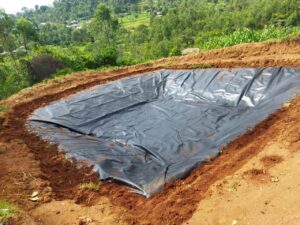
A HDPE dam liner installed by Grekkon Limited in Vihiga county, Kenya
Polyvinyl chloride (PVC) dam liners
We supply and install these but at a lessor scale. PVC dam liners are highly flexible, impermeable and tough. They are heavier than HDPE dam liners, but easier to weld as the material joins together more easily. They have the best resistance to chemicals and acids and so they are not easily corroded. This makes them the most suitable for land fills and chemical containment sites. Our PVC dam liners are factory fabricated panels that eases installation. The downside with PVC dam liners is environmental safety because they release chemicals as the PVC material degrades. This in the long-term is toxic to fish
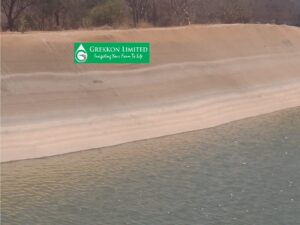
A PVC dam liner installed by Grekkon Limited in a water pan in Kibwezi, Kenya
Low density polyethylene (LLDPE) dam liners
They are made from the same plastic as HDPE dam liners, and so share similarities. Being less dense than their HDPE cousins, they are softer, more flexible and more pliable. Being softer makes them less susceptible to stress cracking. High flexibility allows for easier under installation, and molding them around corners, nooks and crannies. Pliability means they conform best to rough terrain with little wrinkles
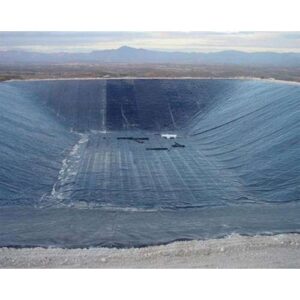
An LLDPE liner in a large water pan
1.2. Types of dam liners in Kenya – by thickness
- 0.5mm / 500 microns. This is for smooth surfaces and to hold low water volume (5,000 cubic liters and below)
- 0.75mm / 750 microns and 0.8mm / 800 microns. Works well in rough surfaces with few stones or murram. It will hold medium water capacity
- 1mm / 1,000 microns. Best for stony or rocky surfaces, and high capacity
- 1.5mm / 1,500 microns. Works on surfaces that the 1mm will not, and holds ultra high water volumes
2. Which is better: PVC or HDPE dam liner?
HDPE is better because it has greater tensile strength, and does not contaminate the environment
3. What is a good thickness for a dam liner?
The choice of thickness is determined by the surface and water volume. For instance, a 0.5mm dam liner is more appropriate for a concrete water tank holding 100 cubic litres than a 1mm dam liner
4. What are the 2 main types of dam liners?
HDPE and PVC dam liners are the most common dam liners in Kenya
5. How long does a dam liner last?
This depends on the thickness, material type and use. As a guideline though, 0.5mm thick dam liners last to 15 years, 0.75mm to 25 years, and 1mm to 36 years
6. Can I put a new dam liner over an old one?
The simple answer is yes, but remove any liquid, and solid debris on the old liner’s surface. Note that once the new one is placed, you cannot shift the old liner without affecting the new one. The new dam liner is not joined to the old dam liner in any way
7. How often do dam liners need to be replaced?
So long as the dam liner is functioning well, it is unnecessary to remove it. There is no replacement timeline
8. What is the best liner for a large water pan?
Large is relative. But for any water reservoir holding beyond 5,000 cubic litres, we recommend the 0.75mm or the 1mm thick dam liners
9. How do you hold a dam liner in a water pan?
There are 2 ways.
9.1. Trenching
This is where a 2 feet deep by 1 foot wide trench is excavated all round the circumference of the water reservoir. This trench is 0.75M to 1M from the edge of the water pan. The dam liner is tucked in here then covered with soil, gravel or rocks/ stones
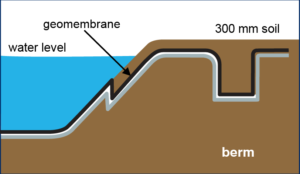

The edges of a newly installed HDPE dam liner in a water pan tucked in a trench and covered with soil
9.2. Sand bags
Bags filled with soil, sand or gravel are laid on top of the dam liner edges to anchor it in place
The different types of dam liners does not affect the holding method
10. Can you join 2 dam liners together?
Yes. Pieces of dam liner welded together make a continuous sheet
11. Can you glue 2 dam liners together?
The best way to join dam liners is by welding because it is permanent
12. Can you cut a dam liner?
Yes. We cut and weld together dam liner sheets from large rolls to tailor it to the water pan’s dimensions
13. Can you put gravel on top of a dam liner?
Yes you can especially if it is for support on the edges
What to consider when choosing a dam liner
- The surface texture. Install a thicker liner for rougher surfaces
- Water volume. The larger it is, the thicker the dam liner
- Purpose. If it will hold chemicals or acids, then the PVC dam liner is best because it is the most resistant
